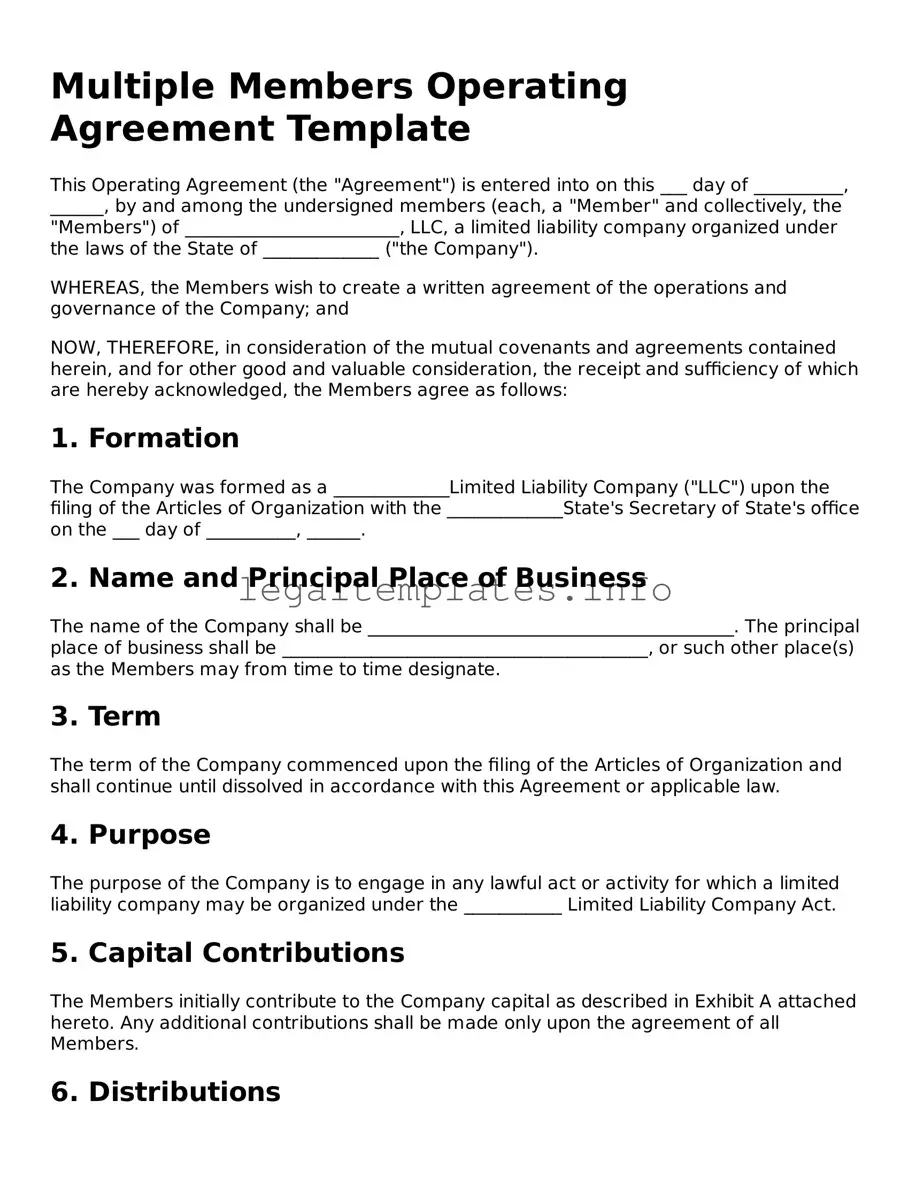Multiple Members Operating Agreement Template
This Operating Agreement (the "Agreement") is entered into on this ___ day of __________, ______, by and among the undersigned members (each, a "Member" and collectively, the "Members") of ________________________, LLC, a limited liability company organized under the laws of the State of _____________ ("the Company").
WHEREAS, the Members wish to create a written agreement of the operations and governance of the Company; and
NOW, THEREFORE, in consideration of the mutual covenants and agreements contained herein, and for other good and valuable consideration, the receipt and sufficiency of which are hereby acknowledged, the Members agree as follows:
1. Formation
The Company was formed as a _____________Limited Liability Company ("LLC") upon the filing of the Articles of Organization with the _____________State's Secretary of State's office on the ___ day of __________, ______.
2. Name and Principal Place of Business
The name of the Company shall be _________________________________________. The principal place of business shall be _________________________________________, or such other place(s) as the Members may from time to time designate.
3. Term
The term of the Company commenced upon the filing of the Articles of Organization and shall continue until dissolved in accordance with this Agreement or applicable law.
4. Purpose
The purpose of the Company is to engage in any lawful act or activity for which a limited liability company may be organized under the ___________ Limited Liability Company Act.
5. Capital Contributions
The Members initially contribute to the Company capital as described in Exhibit A attached hereto. Any additional contributions shall be made only upon the agreement of all Members.
6. Distributions
Profits and losses shall be allocated, and distributions made, to the Members in accordance with the percentages set forth in Exhibit A, except as otherwise agreed in writing by all Members.
7. Management
The Company shall be managed by its Members. The powers, responsibilities, and procedures for management of the Company shall be as outlined in this Agreement.
8. Voting
Each Member shall be entitled to one vote for each percent of ownership interest held in the Company. Decisions requiring a vote shall be made by a majority of the votes cast, unless a greater percentage is required by this Agreement or applicable law.
9. Books and Records
The Company shall keep correct and complete books and records of account and shall also keep minutes of the proceedings of its Members and of actions taken in writing by the Members without a meeting. Such books, records, and minutes may be kept within or outside the State of _______________ as determined by the Members.
10. Amendments
This Agreement may be amended only by a written agreement executed by all Members.
11. Governing Law
This Agreement and the rights of the Members hereunder shall be governed by and construed in accordance with the laws of the State of ____________, without regard to the conflict of laws principles.
12. Signatures
IN WITNESS WHEREOF, the Members have executed this Operating Agreement as of the date first above written.
Member Name: ___________________________________
Member Signature: _______________________________
Date: ___________________________________________
Member Name: ___________________________________
Member Signature: _______________________________
Date: ___________________________________________
Additional lines for Members as necessary.
